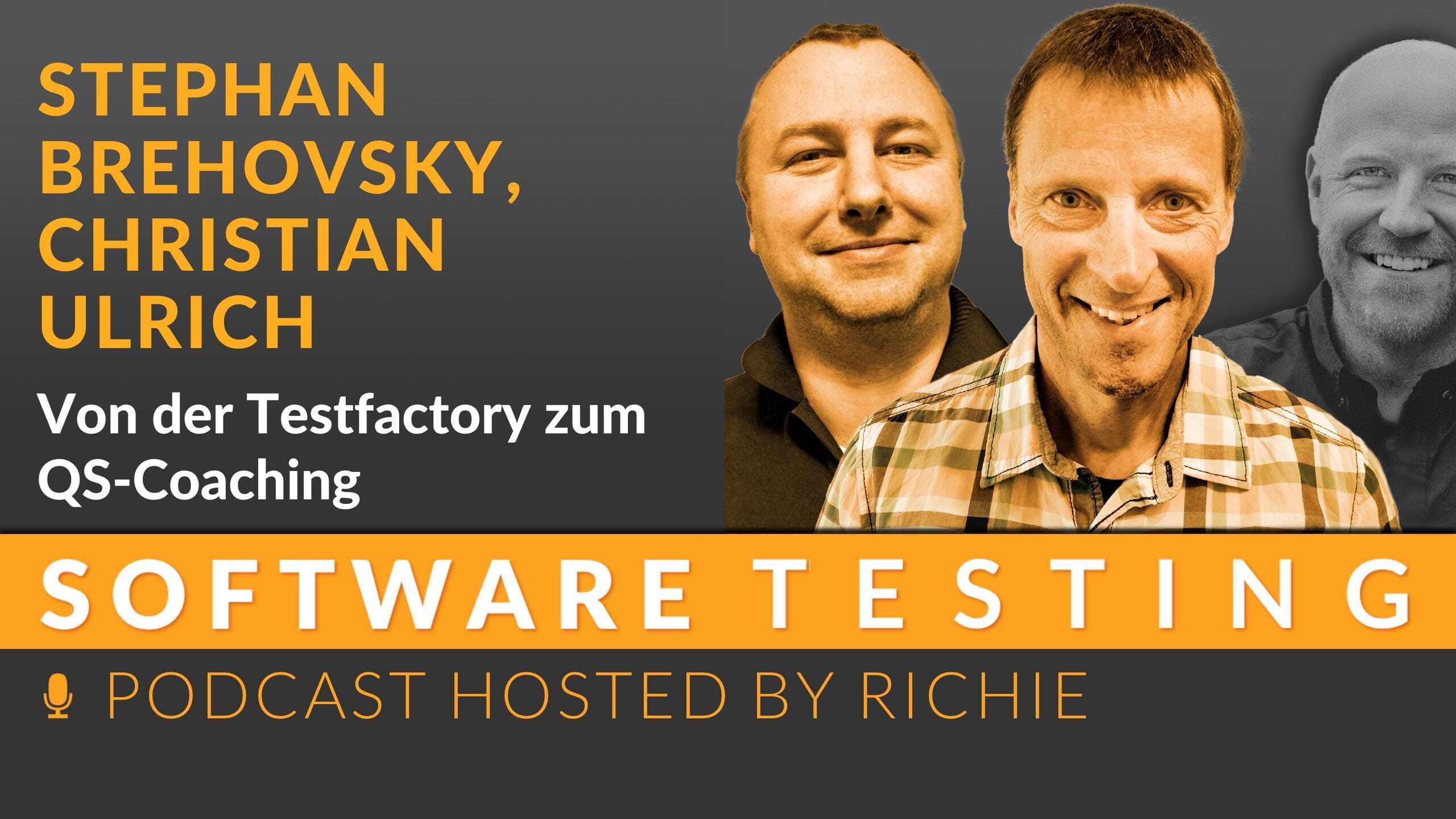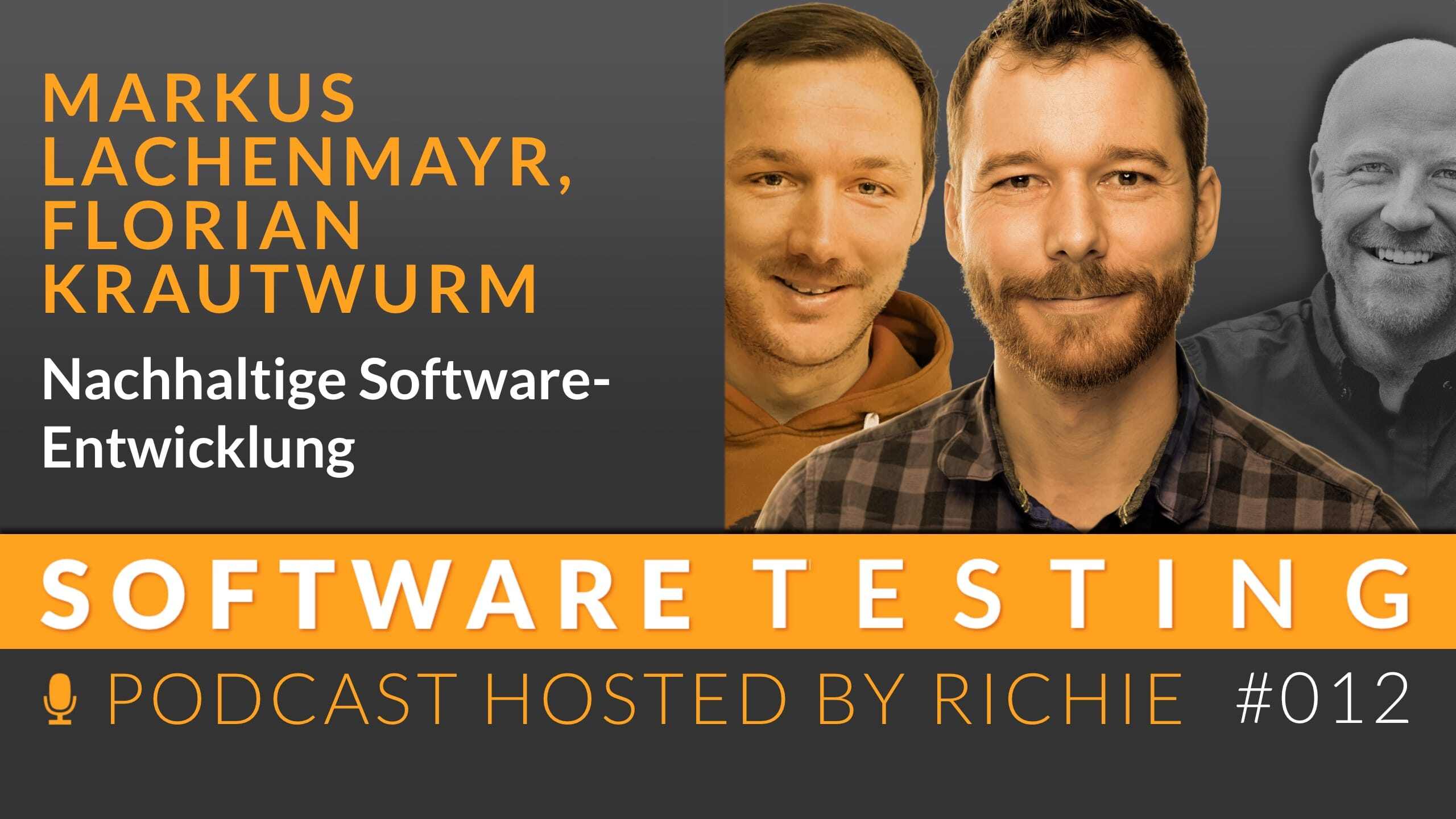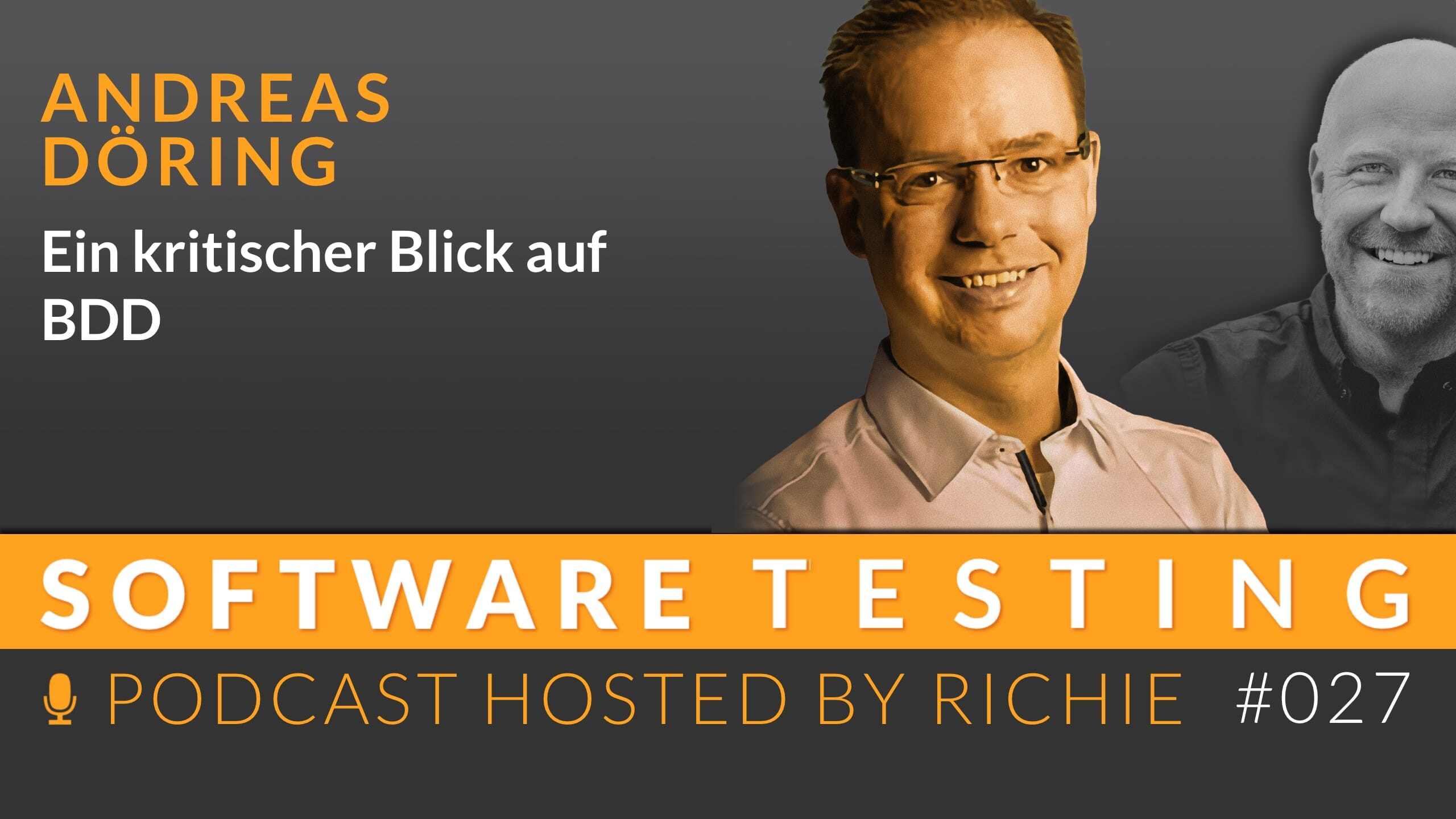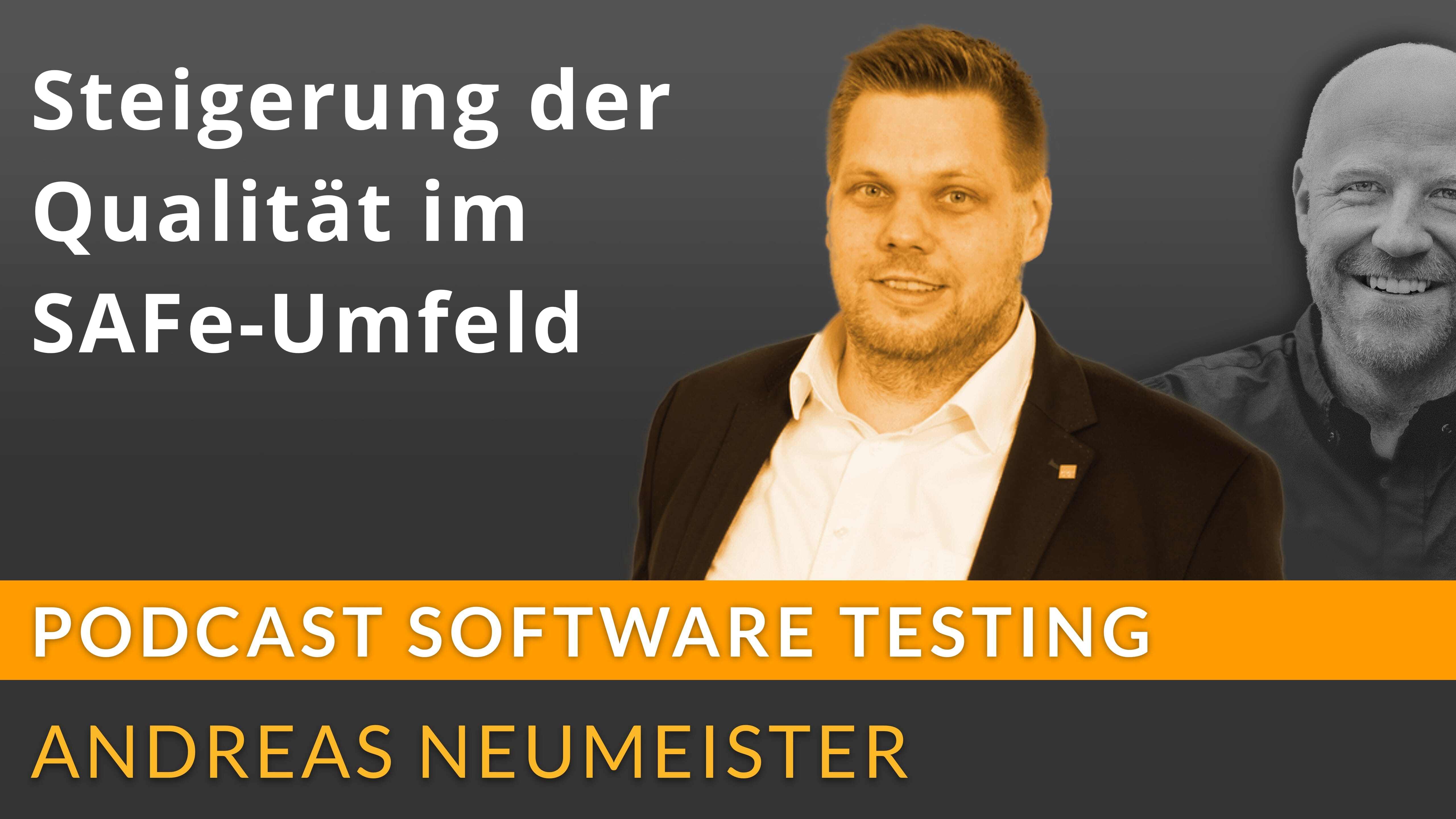Sustainable Software Development
Podcast Episode: Sustainable Software Development Markus and Florian talk about various topics relating to sustainability in software development....

The transformation of test processes within an IT system house offers a deep insight into the change from control authority to coach. Ten years ago, the focus was strongly on strict specifications and the acceptance of classic test manuals. With the introduction of agile methods and the founding of communities of practice, an open culture was established in which testers and developers worked more closely together. This shift to a collaborative approach not only promotes quality, but also an understanding of mutual responsibilities. The findings from this transformation show that the key to improvement lies in constructive exchange, which increases agility and efficiency in the long term.
In this episode, I talk to Stefan and Christian from the IT system house of the Federal Employment Agency about their remarkable transformation. They talk about the transformation of their central testing department into an agile QA coaching service for projects. The Testfactory has developed from a controlling function into an advisory partner that is actively integrated into project phases. It is clear how important the exchange between testers and developers is to ensure quality from the outset. Their approach of integrating feedback from users shows that technical processes must be alive and adaptable.
"We have to open up somehow and have looked to recruit people from every area of the IT system house for a community of practice." - Stefan Brehovsky, Christian Ulrich
Stephan Brehovsky studied materials science at FAU Erlangen-Nuremberg and has been working in software development and testing for 25 years. He has been working for the IT system house of the Federal Employment Agency (BA) since 2009. As an IT architect, he and his team are responsible for advising and supporting projects and procedures in the IT system house with regard to the test process.
Christian Ulrich studied business informatics at the Technical University of Nuremberg. He has been working in quality assurance at the Federal Employment Agency's IT system house since 2008. Since 2016, he has also been coaching agile projects with regard to quality assurance. In addition, he designs workshops such as test methods, risk-oriented tests or exploratory testing and conducts these in-house. He also leads a CoP for the further development of the BA test strategy.
"From test factory to QA coaching" is a topic that sheds light on the transformation of quality assurance in the IT system house of the Federal Employment Agency. The focus of this change is the development from classic test approaches to a consulting QA partner in projects. In large organizations and authorities such as the Federal Employment Agency, quality assurance plays a crucial role in ensuring effective and reliable IT solutions.
A decade ago, the Testfactory was a central department within the organization that took classic approaches to quality assurance. Here are some important aspects of this phase:
This phase marks the starting point of the transformation from a rigid test factory to a more flexible QA coaching approach. By reflecting on this past, valuable insights can be gained into how quality assurance has evolved in large organizations. During this time, however, a test manager in agile projects was not yet widespread, which further limited the flexibility and adaptability of quality assurance processes.
The agile transformation at the Federal Employment Agency's IT system house marked a decisive turning point in quality assurance from 2014 onwards. Previously, the focus had been on rigid control mechanisms and extensive documentation that were neither up-to-date nor practical. The introduction of agile methods initiated a paradigm shift that not only fundamentally changed the way we work, but also the role of the QA department.
A central component of this transformation was the establishment of a Community of Practice (CoP). This community of voluntary members from different areas of the IT system house serves as a platform for exchanging experiences, identifying problems and jointly developing solutions. The CoP promotes cooperation and ensures that knowledge about quality assurance is widely distributed and jointly developed.
The previously extensive test manual has been greatly reduced in size and simplified. Instead of a confusing Word document, a lean version is now maintained on the Confluence platform. The content is more easily accessible there and can be dynamically adapted - a big step forward compared to the previous "thick ham". Only legally prescribed minimum requirements remain binding, while many details have been made more flexible.
Another significant advance is the introduction of testing quadrants as a modern concept for structuring tests. This model divides tests into different categories:
This clear categorization makes quality assurance more holistic and covers all phases of the development cycle. This makes it easier for teams to develop and implement suitable test strategies. In this context, software testing plays a crucial role as it is shaped by AI and agile transformation.
Agility not only means faster processes, but also more collaboration and shared learning. The community of practice and the new test plan with the testing quadrants are visible results of this cultural change towards more openness and service orientation in the IT system house's QA department.
The QA department has evolved from a pure control mechanism to a coaching partner for projects. Here are some important points about this development:
Instead of just controlling, the QA department now proactively offers advice and support.
By getting involved in projects at an early stage, test plans can be better supported and the selection of service providers can be accompanied.
Due to limited resources, the focus is on the service concept in order to provide the best possible support for projects.
This shift towards the coaching role shows a shift from pure testing to actively shaping quality assurance processes in the projects. However, this coaching role also requires a certain degree of agility and adaptability in order to effectively support the teams and managers.
The integration of development testing and the shift left approach play a crucial role in the further development of quality assurance in large organizations such as the IT system house of the Federal Employment Agency. Here are some important aspects to consider:
Development tests are now increasingly being integrated within the testing quadrants of the test plan. This means that tests are carried out at an early stage of the development process in order to detect and correct errors at an early stage. These development tests are an essential part of agile software testing, which not only increases quality but also changes the roles in the team.
The shift left approach aims to implement quality management as early as possible in the development cycle. By identifying and eliminating errors at an early stage, costs can be reduced and the overall quality of the product improved.
These new concepts help to increase the efficiency and effectiveness of quality assurance and ensure that potential problems can be identified and rectified at a very early stage. The integration of development tests and the shift left approach thus support the continuous improvement of test processes and make a significant contribution to increasing product quality.
In the process of transformation from test factory to QA coaching, various challenges can arise that need to be overcome:
By proactively addressing these challenges, organizations can successfully transform their quality assurance departments and make the transition from rigid test factories to flexible QA coaching partners.
The transformation from the classic test factory to QA coaching has sustainably improved collaboration with the project teams. Instead of acting as a controlling authority, the QA department now acts as an advisory partner, which leads to a more open and productive exchange.
Important aspects of this development:
These successes are an example of how a formerly centralized test factory can be transformed into a modern, agile QA coaching system - with clear benefits for everyone involved and a noticeable improvement in collaboration.
The continuous improvement of quality assurance (QA) remains a central challenge at the Federal Employment Agency's IT system house. The team sees significant development potential in increased communication and cooperation between the development and testing teams. The previous separation of these areas is to be overcome in favor of a more integrative approach.
The focus is on the following aspects:
These developments are aimed at sustainably strengthening quality assurance and adapting it to the dynamic requirements of large IT projects. The IT system house is thus providing impetus for a sustainable QA culture in official contexts.
The transformation from the classic test factory model to an agile QA coaching team at the Federal Employment Agency is an impressive example of how change management can be successfully implemented in large, regulated organizations.
Important findings from this transformation process:
Organizations from other authorities or large companies can learn from this example and pursue similar approaches. The path from test factory to QA coaching opens up opportunities for modern, effective quality assurance that both meets the requirements of large institutions and motivates and involves employees.
The transformation success illustrates that change is achievable through consistent change management and agile values - an inspiring model for the future of quality assurance.

Podcast Episode: Sustainable Software Development Markus and Florian talk about various topics relating to sustainability in software development....

Podcast Episode: A Critical Look at BDD Behavior Driven Development, or BDD for short, is a powerful framework that is often misunderstood or...

The Scaled Agile Framework (SAFe) helps companies to successfully master the agile transformation. However, effective strategies are also needed to...